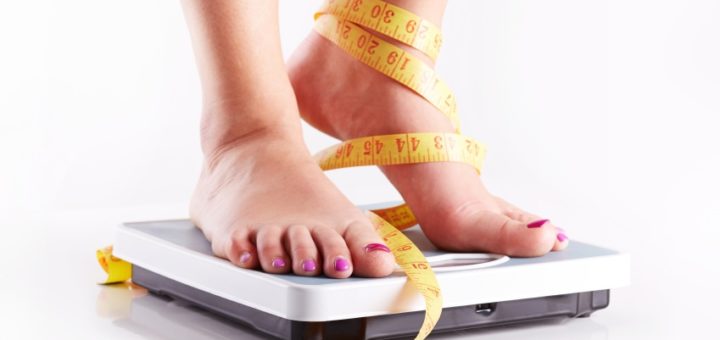What is the Body Mass Index?
What is the Body Mass Index?
I have been a little short of resource-based posts lately (partly due to attention shifting to my blogging mission and partly do to spending less time at the computer due to a gruelling workout schedule I am on) – so I thought I would bust right back in here with something topical and something that people frequently ask me about – the Body Mass Index!
The Body Mass Index (BMI) is a measure that is used to define whether individuals are underweight, overweight, healthy or obese. It takes into account your height and weight and is calculated using the following formula:
BMI = Body Weight/(Height x Height)
For example, if you weight 70 kilograms and are 170 centimeters tall your BMI calculation would be:
BMI = 60/(1.75m x 1.75m)
= 22.86
So what is the ideal BMI?
Recommended BMI Chart
Underweight BMI less than 18.5
Ideal BMI 18.5-25
Overweight BMI 25-30
Obese BMI 30-40
Very obese BMI greater than 40
The Pro’s and Con’s of the BMI
BMI is used universally and for a wide range of purposes. From dieters to athletes and from researchers to statisticians, BMI has been accepted as the easiest and most recognised method for determining a ‘healthy weight’. And this is it’s greatest strength – it is simple and it is the same for everyone.
However, this simplicity is also its greatest weakness – this tool does not apply to everyone.
As noted in QJM, the monthly journal of the Association of Physicians in Great Britain:
“General applicability of BMI is challenged by results from studies of individual populations … Although BMI is a generally convenient measure, it lacks a theoretical foundation, and may be compromised by ethnic, cultural or lifestyle differences. Nonetheless, BMI has been used as a generic risk factor in epidemiological research of many pathological conditions, has been adopted as the main or sole measure of obesity in numerous clinical trials, and subsequently has been incorporated into clinical guidelines concerning screening for and treatment of various common diseases. Thus the weaknesses of the BMI could have important implications for public health specialists, for researchers and for clinical practitioners in many fields.”
This hits the nail on the head, and shows that we should look further than BMI when considering our own weight, health and goals. If you are in any way athletic, BMI does not take muscle weight into consideration and can create grossly misleading results. For instance, at a height of 1.77m and with a weight of 90kg, Jonny Wilkinson is considered as borderline obese.
Better Ways to Measure
While I, personally, have always been a fan of the ‘how do I feel, how do I look’ approach to my body – I appreciate that this is not necessarily quantifiable enough for most people! Here are some more accurate and alternative approaches for those looking to measure their weight loss success:
- Measure your waist: basic, but actually more thorough than BMI as it gives you results that are relative to you, your starting weight/shape and in essence, the way you look and the way you feel
- Measure your body fat percentage: by measuring your body fat percentage against your actual overall weight you can get a much clearer picture of the type of weight you are losing/gaining. This is particularly important if you are using aerobic and anaerobic exercise (highly recommended!) as part of your weight loss/gain program. To measure your body fat always use body fat callipers rather than scales, as the scales can be far from accurate. It is also best to take a reading twice daily (when you get up and then again just before bed) and take an average of the two.
Personally, I would use two or three measures to track your progress as they all have their pro’s and con’s. I really think that the way you look in the mirror (and how your clothes fit) and how you feel inside is the best measure though and whether you are doing this just purely for your health, or whether you are doing it to look great too (never do it ONLY to look great – it feels great to feel great!) – these two will give you all of the information you need!
P.S. Fat Fighter Blog does a tidy job of defining the BMI here






Body Mass Index is not as accurate as body fat as by the BMI I am overweight but with only 7% body fat. Someting is wrong.
Hi Amy!
Thanks so much for stopping by! You are absolutely spot on – I first started doing this when I tried the Body for Life challenge ages ago and it was really great to be able to track the progress like that. It takes away the distorted self image we can sometimes get when we look in the mirror or imagine what we look like and really does provide motivation!
I love your blog by the way – it is really great to have an insight on this post from someone who really does know what they are talking about!
I hope you have a great week and that your new training schedule is still going to plan!
Ross
To add to your “How do I look/feel” method (which I DO think is important, although not quite data-driven enough for me to use exclusively!) is to remember to take pictures, especially if you are starting a specific, timed nutirional or exercise program. For example, if you decide to do a 12 week “Get Fit” program, take your starting picture in a two piece (for women) or just shorts (for men) both front and back. Stand tall against a plain background and take pictures in the same clothes and position about every 4 weeks.
I know how easy it is for people to get discouraged when they think “What? I’ve ONLY lost an inch and a half?!” until they compare pictures and see just how much change their body has made with that inch and a half. It’s a great way to stay on track!